Four major projects worth Rs. 920 crores operationalized in Uttar Pradesh and Bihar under Namami Gange Mission 2.0
In a significant stride towards rejuvenating and conserving the sacred River Ganga, the Government of India has successfully completed and operationalized four major projects under the Namami Gange Mission 2.0 in the first quarter of fiscal year 2024-25. These initiatives located across the mainstream of the river Ganga in Bihar and Uttar Pradesh, are pivotal in the ongoing efforts to curb pollution and enhance the ecological health of the Ganga and its tributaries.
These projects built for Rs. 920 crores, will add 145 MLD of sewage treatment capacity, provide better sewer networks, and intercept numerous drains. Designed to meet the stringent discharge standards prescribed by the National Green Tribunal, these initiatives ensure substantial improvements in the water quality of the Ganga and its tributaries.
The project at Munger (Bihar) will improve sewer network, and establish Sewerage Treatment Plant (STP) at an estimated cost of Rs. 366 crores. This comprehensive project involves the development of a 175 km sewerage network and the construction of a 30 MLD capacity STP. The project has been implemented using the DBOT (Design, Build, Operate, and Transfer) Model. It will benefit approximately 3,00,000 residents by connecting their households to the sewer network, significantly improving the city’s sanitation infrastructure and preventing the discharge of untreated sewage into the River Ganga.
30 MLD STP at Munger
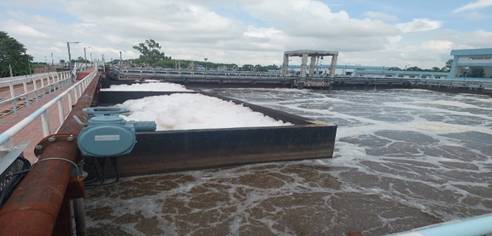
The other important project, established at Mirzapur (Uttar Pradesh) is for the Interception, Diversion and Treatment Works for abatement of Pollution of River Ganga. This project, built at an estimated cost of Rs. 129 crores, is now operational and focuses on the abatement of pollution in the Ganga at Mirzapur by intercepting nine drains and rehabilitating six existing drain interception structures. With the inception of two new STPs—Pakka Pokhra and Bisunderpur—each with a capacity of 8.5 MLD, along with the rehabilitation of existing STPs, the sewage treatment capacity has now increased to 31 MLD. This project prevents untreated sewage from entering the Ganga, significantly improving water quality and supporting aquatic biodiversity.
8.5 MLD STP at Pakka Pokhara, Mirzapur
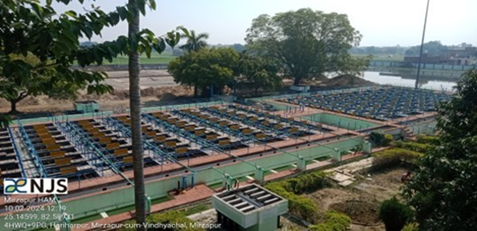
The project in Ghazipur (Uttar Pradesh) has been established for interception, diversion, and treatment works for abatement of pollution of River Ganga, with a sanctioned cost of Rs. 153 crores. This project, now operational, includes the development of a 1.3 KM I&D network and 21 MLD STP. This project benefits city by treating sewage effectively, preventing the discharge of untreated sewage into the Ganga.
21 MLD STP at Ghazipur
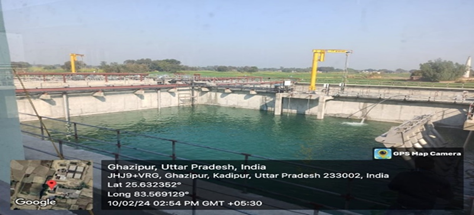
Apart from Mirzapur and Ghazipur, an important project for interception, diversion, and sewage treatment works has been established at Bareilly (Uttar Pradesh) at an estimated cost of Rs. 271 crores and is now operational. This project targets pollution abatement in the river. It includes the interception and diversion of 15 drains and the construction of three STPs with a combined capacity of 63 MLD. The Project will benefit the city by having its sewage treated at the STPs and thereby avoiding discharge of untreated sewage to river Ramganga, resulting in the improvement in the water quality of the river Ganga.
42 MLD STP at Bisalpur Road, Bareilly
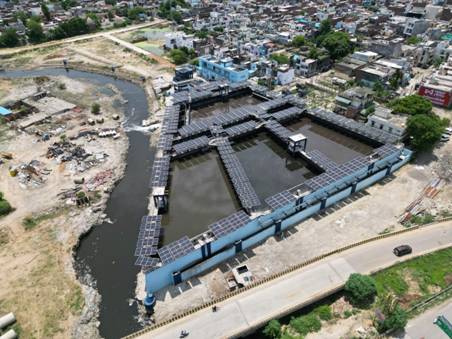
20 MLD STP at Chaubari, Bareilly
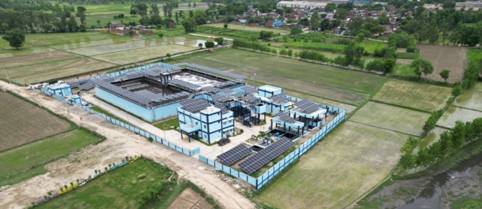
These projects based on Hybrid Annuity PPP (HAM) model have been designed on the basis of Advanced Sequencing Batch Reactor technology. The STP’s have been meticulously constructed in accordance with the strict standards and guidelines set by the National Green Tribunal (NGT). These projects, along with giving a boost to the Namami Gange mission by treating wastewater and making the rivers clean, will also benefit a large population of the respective cities.
Through the National Mission for Clean Ganga (NMCG), the Government of India remains unwavering in its commitment to the holistic rejuvenation of the Ganga. These projects stand as a testament to the Prime Minister Shri Narendra Modi led government’s dedication to create a cleaner, healthier and more vibrant river ecosystem for future generations.

